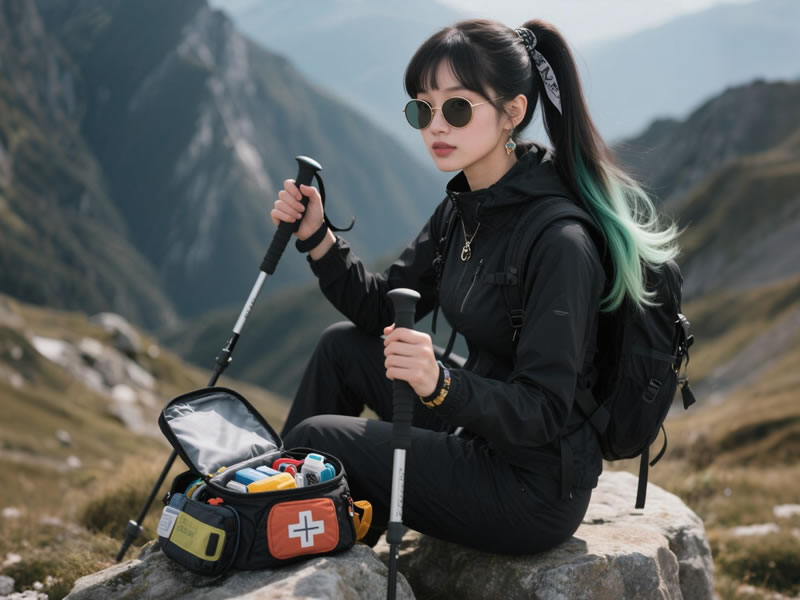Ultralight first-aid kit essentials
In the realm of outdoor adventures, especially for ultralight backpackers and long-distance hikers, having a well-curated first-aid kit is non-negotiable. While the emphasis is on minimizing weight, compromising on the effectiveness and comprehensiveness of the kit is not an option. This article delves deep into the essential components of an ultralight first-aid kit, ensuring you’re prepared for unexpected situations without being burdened by excess bulk.

Wound Care Basics
Adhesive bandages are the cornerstone of any first-aid kit. Opt for a variety of sizes, from small strips for minor cuts to larger ones for more extensive abrasions. Hydrocolloid bandages, in particular, are a great addition as they form a protective seal, promote healing, and are especially effective for blisters, a common woe among hikers. Antiseptic wipes are indispensable for cleaning wounds and preventing infections. Choose individually wrapped wipes to reduce weight and maintain hygiene. Gauze pads, both sterile and non-sterile, along with medical tape, offer flexibility in dressing wounds of different sizes and shapes. Non-stick sterile pads are ideal for covering open wounds, preventing the dressing from adhering and causing further pain during removal.
Pain and Ailment Management
Over-the-counter medications play a crucial role in managing common discomforts on the trail. Ibuprofen or acetaminophen can alleviate pain from headaches, muscle strains, and joint aches. For digestive issues, which can arise due to changes in diet or water quality, antacids and anti-diarrheal medications like loperamide are essential. Antihistamines, such as diphenhydramine, are a must-have for allergic reactions, whether it’s from insect bites or plant 接触. They can also help with mild cases of itching and swelling.
Tools for Emergencies
Tweezers are multi-functional tools in an ultralight first-aid kit. They can remove splinters, ticks, and other foreign objects from the skin. A small, sharp pair of scissors is useful for cutting bandages, clothing, or other materials in emergency situations. Safety pins can be used to secure dressings or as a makeshift repair tool for gear. A thermometer, although seemingly bulky, can be a valuable asset in monitoring body temperature, especially in cases of suspected fevers or heat-related illnesses. Compact, digital thermometers with a minimal footprint are available, making them suitable for ultralight kits.
Specialized Items for Outdoor Risks
Insect repellent wipes or sprays are vital for protecting against bug bites, which can transmit diseases like Lyme disease or West Nile virus. Sunscreen with a high SPF rating is essential for preventing sunburn, especially during long days exposed to the sun. For hikers in cold climates, heat packs can provide temporary warmth for frostbite prevention or relief. Moleskin, as mentioned earlier, is excellent for blister prevention and treatment. Additionally, a roll of kinesiology tape can be used to support muscles and joints, reducing the risk of strains and sprains.
Customizing Your Kit
The contents of an ultralight first-aid kit should be tailored to the specific nature of your adventure. If you’re hiking in a remote area with limited medical access, you might consider adding more advanced items like sterile syringes, sutures (if you’re trained in using them), and a SAM splint for immobilizing fractures. For those with pre-existing medical conditions, such as asthma or diabetes, including necessary medications and supplies like inhalers or glucose tablets is crucial.
Packaging and Organization
To keep your first-aid kit ultralight, choose a lightweight, waterproof container. A resealable plastic bag or a small, durable nylon pouch with compartments can help keep items organized and easily accessible. Label each item clearly, and consider creating a checklist so you can quickly assess if anything needs to be restocked after use.
In conclusion, an ultralight first-aid kit is a compact yet powerful safeguard for outdoor enthusiasts. By carefully selecting and packing these essential items, you can face the unexpected with confidence, knowing that you have the means to address common injuries and ailments while keeping your pack as light as possible. Remember, the key is to balance preparedness with minimalism, ensuring your kit is both effective and ultralight.






